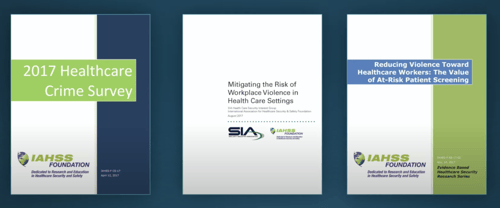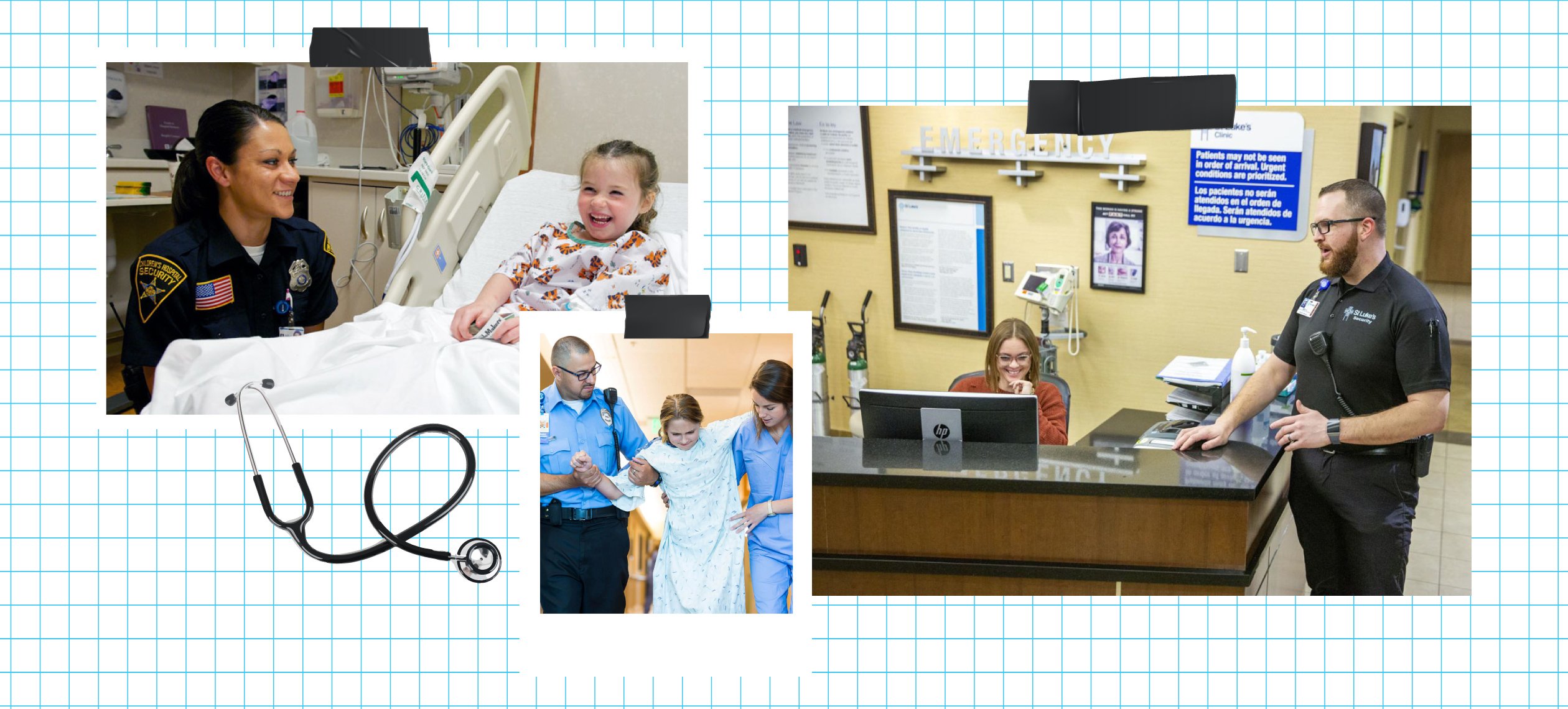Healthcare workers are four times more likely to be victims of workplace violence than any other traditional private industry workforce.
But it doesn't have to be that way. With research, analysis and an eye for innovation, healthcare providers can create cost-effective, safe and secure spaces for employees and patients alike.
During a discussion at HealthSpaces, Rick Redetzke, senior vice president of facilities and real estate at SSM Health and Mark Reed, director of support services at MLK Jr. Community Hospital, discussed how workplace violence can impact healthcare systems as a whole and how facilities can better protect their employees.
"In 2018, the American College of Emergency Physicians released a study that found half of emergency physicians have been assaulted at work," Reed said. "These stats affect recruitment and retention of doctors and nurses. They will choose to work somewhere it is safe."
In an attempt to retain and attract employees and lower costs, both MLK Jr. Community Hospital and SSM Health have worked to improve their security systems. Read on for seven considerations hospitals can take to reduce workplace violence.
Address Staffing
Unlike many areas of the healthcare system, the security department does not generate revenue. Instead it's a cost factor, Redetzke said.
Yet, with proper staffing, the security department can bolster other areas of the facility. By providing employees with a sense of security and safety, the facility can better retain and attract talent.
"There's a role for security, but how do you make a case for these officers?" he said, pointing to a small behavioral health hospital he worked with that had sought to increase the security team by about 30%.
At this particular hospital, Redetzke received feedback from the workplace planning team that felt they already had three times as many officers as needed.
"We struggled with that tremendously. What we ended up doing was thinking from an industry benchmark,” he said.
Using a benchmark from IAHSS, the team took into consideration not just square footage of the facility, but the number of licensed beds, if there's a behavior health unit, a trauma center designation or both.
"When you do that across all locations, it allows you as a leader to advocate pretty reliability for your staff," he said. "There's a correlation between staffing of officers and having a fast response rate. The more you can create standards, you can have appropriate staffing levels."
Reed said that another way to address staffing was to look at the benefits and drawbacks of contracting out the system versus housing it within the healthcare system.
"We were contract security, but brought it in-house. During that process we went to meet with stakeholders and said what are you looking for?” he said of MLK Jr. Community Hospital. “At the end of the day from a security standpoint, our customers are our staff."
With 131 beds in the hospital, the organization was able to staff 71 full-time equivalent (FTE) officers in the security department.
"That's unheard of. We were lucky," he said. "A big thing is not me going to say we need more FTE, but having the chair of the ER physicians go in to say we need another officer."
When it comes to the people hired for these positions, Reed said that they don't need to be former police officers or those in such security-type positions in the past.
"When you look to hire security officers, we had one manager that was adamant we wanted ex-law enforcement or military guys," Reed said. "While there's a place for those individuals, I have an officer that is in her 50s."
The woman, named Ms. Jones has a report with people, Reed said. She is able to come in and automatically defuse a situation.
"She just walks in nice and calm and automatically you feel the tension leave the room," he said. "Where as, if a 6'2" 220-pound guy walks in, it's a 'we're going to fight, I can take you' mentality."
Look at Security Processes
During the transition to an in-house security system at MLK Jr. Community Hospital, the facility took a hard look at their current procedures and processes to ensure they were adequate.
"We did away with static posts," Reed said.
That means instead of a security officer sitting at a desk near the entrance, they're moving around the building making rounds.
"We have them popping in and out," he said. "It's purposeful. They are interacting, talking to nurses and asking how things are going, what's going on with this patient or that."
By making the security officers a larger part of the hospital's operations they also serve as a deterrent for anyone thinking of creating a scene or acting out.

Research and training staff tools |
"They are going in and checking with patients, too," Reed said. "They get a visual deterrent to know there's security around. If they see it, they probably won't try something."
For Redetzke, a similar model has proven to work well at SSM Health.
"It was about being analytical," he said. "We asked officers if they did a round here, did they talk to this nurse, are you developing a trusting relationship. We found a lot of success with that. At the core, if you don't have good staffing levels you can't build those trusting relationships."
Expand Training
While having a robust security department and trained staff within is vital to reducing workplace violence, both Reed and Redetzke said training other hospital staff on security procedures played an important role in overall safety.
"We're training all staff on de-escalation techniques," Redetzke said. "We're trying to get physicians trained all the way down to the janitors, dietary staff, anyone near the stage where violence is occurring. We want to give them techniques on how to react if a situation happens."
For example, the team will teach staff not to put themselves between the patient and the exit, to keep doors open and to try not to be isolated with patients or family members.
Risk Assessment
A large portion of the expanded security within the healthcare systems should focus on risk assessments, as well.
For instance, undergoing a risk assessment that finds making small changes to the reception area or to the hardware on doors can make a big difference in creating a purposeful security process, Redetzke said.
Reed said that keeping these assessments in mind when designing spaces can also reduce the opportunity for violence.
"Take a typical nurses station," he said. "We have these beautiful vases with flowers, it looks nice, but if you imagine a visitor that is not quite happy because his wife is not getting the care he thinks she needs, he's going to act out and grab that vase because it's right there. We need to educate staff to move that vase to the back where he doesn't have access."
Threat Assessments
While risk assessment plays into preparing physical spaces for workplace violence, creating a threat assessment team for patients and visitors is another vital component to combat workplace violence, Reed said.
"When a patient presents there are six or seven questions we go through," Reed said. "We score them to see if they are going to be a threat."
The system, which also includes a suicide risk screening process, allows the patient's health records to be flagged so that a nurse or physician who pulls up their chart can identify that the patient has the potential to be violent or has recently acted out.
However, Reed notes that not all staff have access to these charts. In that case, MLK Jr. Community Hospital has taken it a step further, placing a coded sticker on the patient's door to notify others, such as cleaning staff, that the patient could become violent.
"We also do that for visitors," he said. "We track them, scan their license, take a photo and track any issues. Communication is the key."
Reducing Stress and Anxiety
"There's a part of workplace violence that isn't about the data, the physical security environment or staffing levels," Redetzke said. "It's the concept that 90% of the role of the security department is about reducing stress and anxiety."
In one case, Redetzke said a hospital he worked with took it upon themselves to print signs that made it clear they didn't tolerate workplace violence and those involved in such incidents could be prosecuted.
"Should they have done that?" Redetzke asked. "We debated that for months.”
While there wasn't data to support the idea that a sign would reduce violence, Redetzke looked at it from a different angle.
"If staff feel that the sign allows them to point to it in the right situation or visitors will see it and it has some even marginal impact, what's the cost of that paper?” he said. “At the end of the day, if staff want it and feel it's effective, there's a component to reduce stress and anxiety."
Do Your Research
While Reed and Redeztke provided a number of steps and considerations when it comes to reducing workplace violence through proper security systems, they also stressed the need to research the topic and specific needs of the facility frequently.
For Reed, MLK Jr. Community Hospital uses research each year to ensure their systems are up-to-date and purposeful.
"We've become a program of distinction, with 70% of staff certified as healthcare security officers or supervisors," he said. "We do a lot of research, a crime survey and evidence-based research and screening."
Taken together, the research, training and staffing can ensure that healthcare facilities are properly prepared to reduce workplace violence.

Posted by
Collaborate with your Peers!
HealthSpaces is a community for people that plan, design, build and operate spaces where healthcare is delivered.
June 7-9, 2026 | Braselton, GA
Learn More




-4.png)
-Dec-09-2025-05-48-44-4379-PM.png)
-4.png)
-1.png)
-2.png)

Comments